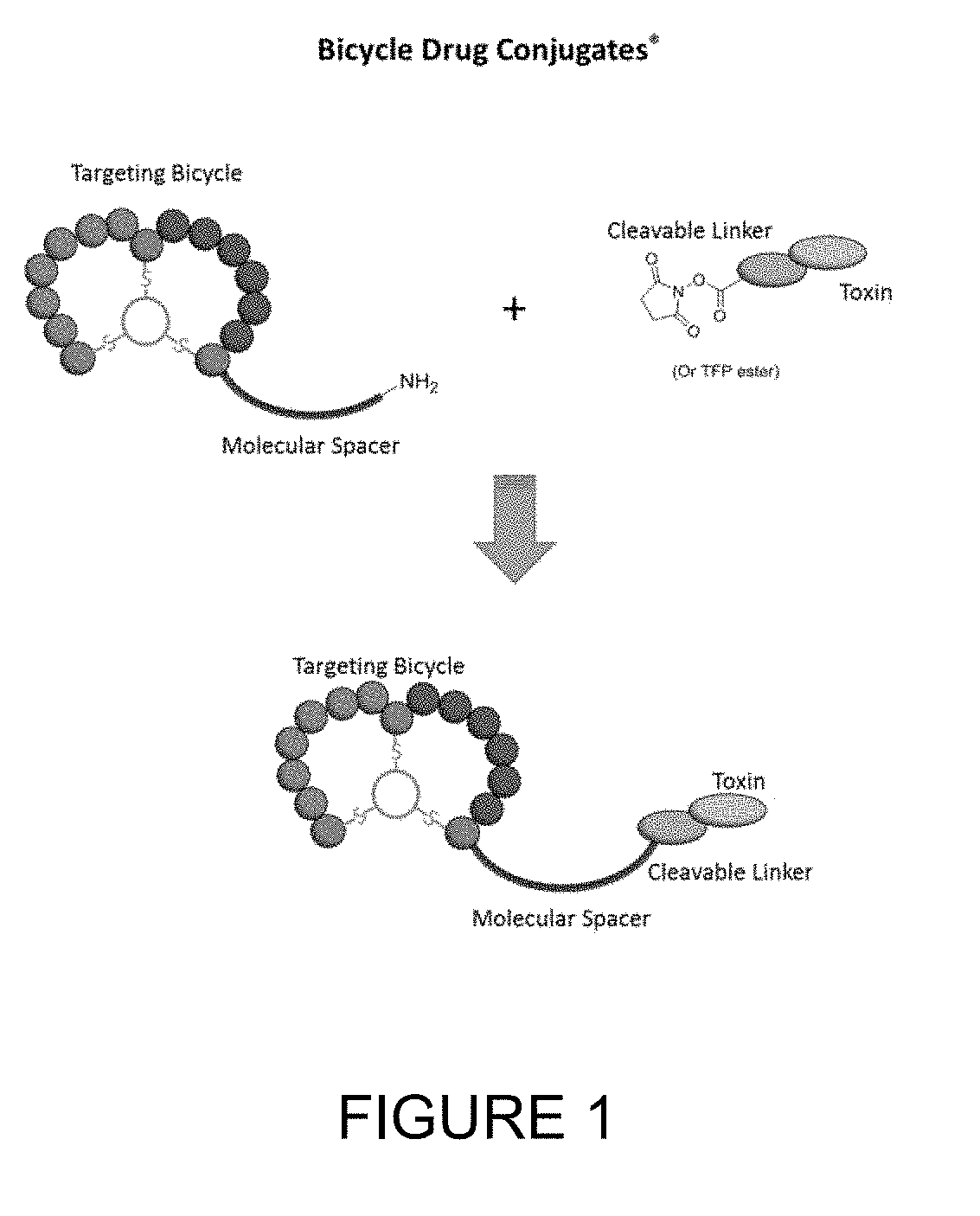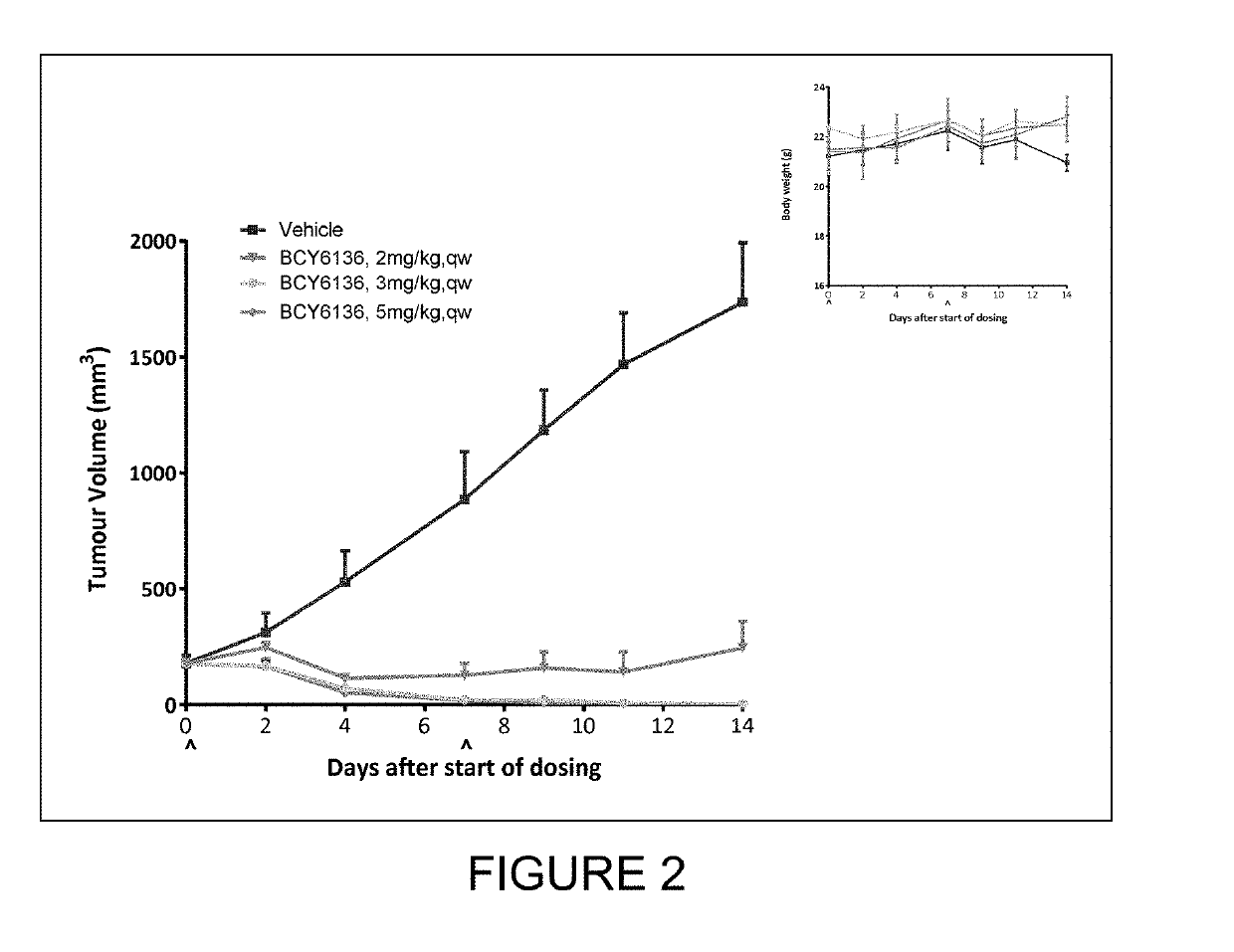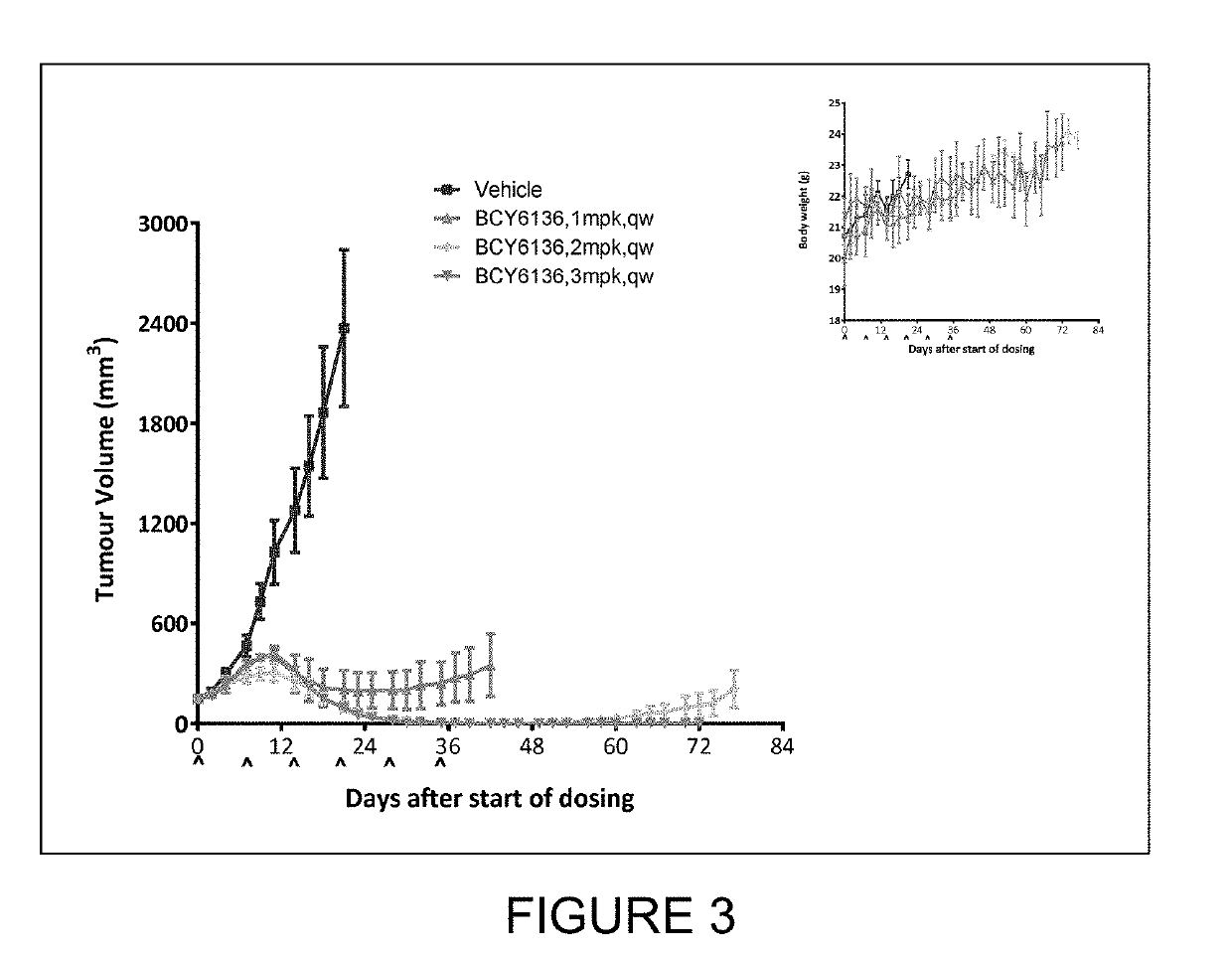BICYCLIC PEPTIDE LIGANDS SPECIFIC FOR EphA2
a bicyclic peptide and epha2 technology, applied in the field of polypeptides, can solve the problem of reducing the conformational flexibility of the cyclic structure, and achieve the effect of preventing, suppressing or tr
- Summary
- Abstract
- Description
- Claims
- Application Information
AI Technical Summary
Benefits of technology
Problems solved by technology
Method used
Image
Examples
examples
[0141]
PrecursorAbbreviationsNamePrecursor NameCASSupplierβ-Alaβ-AlanineFmoc-β-alanine35737-10-1FluorochemD-AspD-Aspartic acidFmoc-D-aspartic112883-Sigma aldrichacid 4-tert-butyl ester39-3FI5(6)-SigmacarboxyfluoresceinHArgHomoArginineFmoc-L-401915-FluorochemHomoArg(Pbf)-OH53-5HyPHydroxyprolineFmoc-122996-SigmaHydroxyproline(tBu)-47-8OHSarSarcosine, such thatFmoc-Sarcosine-OH77128-70-2SigmaSarxrepresents xSar residues
Materials and Methods
Peptide Synthesis
[0142]Peptides were synthesized by solid phase synthesis. Rink Amide MBHA Resin was used. To a mixture containing Rink Amide MBHA (0.4-0.45 mmol / g) and Fmoc-Cys(Trt)-OH (3.0 eq) was added DMF, then DIC (3 eq) and HOAt (3 eq) were added and mixed for 1 hour. 20% piperidine in DMF was used for deblocking. Each subsequent amino acid was coupled with 3 eq using activator reagents, DIC (3.0 eq) and HOAT (3.0 eq) in DMF. The reaction was monitored by ninhydrin color reaction or tetrachlor color reaction. After synthesis completion, the pept...
study 9
Efficacy Test of BCY6136 in Treatment of NCI-H1975 Xenograft in Balb / c Nude Mice
(a) Study Objective
[0245]The objective of the research was to evaluate the in vivo anti-tumor efficacy of BCY6136 in treatment of NCI-H1975 xenograft model in Balb / c nude mice.
(b) Experimental Design
[0246]
DosingDoseVolumeDosingGroupTreatmentn(mg / kg)(μl / g)RouteSchedule1Vehicle3—10ivqw2BCY61363110ivqw3BCY61363210ivqw4BCY61363310ivqw
(c) Experimental Methods and Procedures
(i) Cell Culture
[0247]The cells growing in an exponential growth phase were harvested and counted for tumor inoculation.
(ii) Tumor Inoculation
[0248]Each mouse was inoculated subcutaneously at the right flank with NCI-H1975 tumor cells (10×10{circumflex over ( )}6) in 0.2 ml of PBS for tumor development. 36 animals were randomized when the average tumor volume reached 149 mm3. The test article administration and the animal numbers in each group were shown in the experimental design table.
(iii) Testing Article Formulation Preparation
DoseTreat...
study 17
Efficacy Test of BCY6136 in Treatment of MDA-MB-231-Luc Xenoqraft in Balb / c Nude Mice
(a) Study Objective
[0331]The objective of the research was to evaluate the in vivo anti-tumor efficacy of BCY6136 in treatment of MDA-MB-231-luc xenograft model in Balb / c nude mice.
(b) Experimental Design
[0332]
DosingDoseVolumeDosingGrTreatmentn(mg / kg)(μl / g)RouteSchedule1Vehicle3—10ivqw2BCY61363110ivqw3BCY61363210ivqw4BCY61363210ivqw
(c) Experimental Methods and Procedures
(i) Cell Culture
[0333]The cells growing in an exponential growth phase were harvested and counted for tumor inoculation.
(ii) Tumor Inoculation
[0334]Each mouse was inoculated subcutaneously at the right flank with MDA-MB-231-luc tumor cells (10×10{circumflex over ( )}6) in 0.1 ml of PBS with 0.1 ml matrigel for tumor development. 36 animals were randomized when the average tumor volume reached 159 mm3. The test article administration and the animal numbers in each group were shown in the experimental design table.
(iii) Testing Article...
PUM
| Property | Measurement | Unit |
|---|---|---|
| Volume | aaaaa | aaaaa |
| Volume | aaaaa | aaaaa |
| Volume | aaaaa | aaaaa |
Abstract
Description
Claims
Application Information
 Login to View More
Login to View More - R&D
- Intellectual Property
- Life Sciences
- Materials
- Tech Scout
- Unparalleled Data Quality
- Higher Quality Content
- 60% Fewer Hallucinations
Browse by: Latest US Patents, China's latest patents, Technical Efficacy Thesaurus, Application Domain, Technology Topic, Popular Technical Reports.
© 2025 PatSnap. All rights reserved.Legal|Privacy policy|Modern Slavery Act Transparency Statement|Sitemap|About US| Contact US: help@patsnap.com



